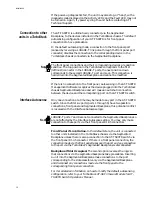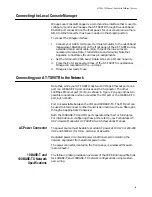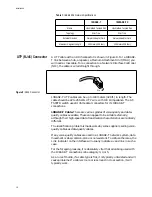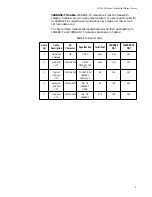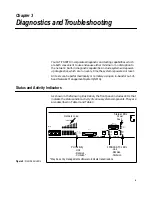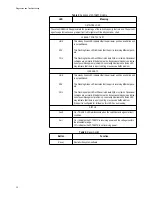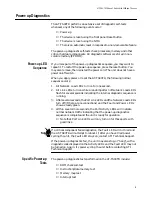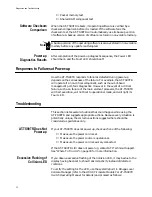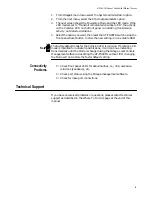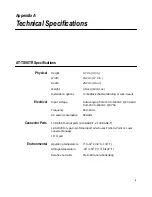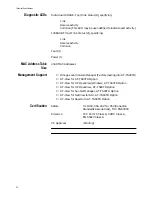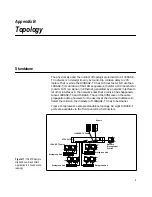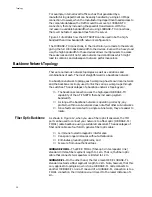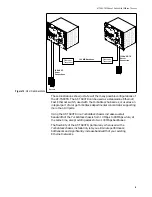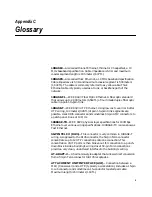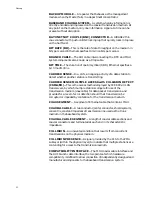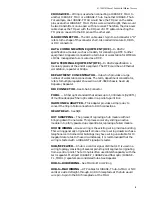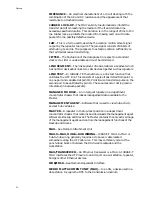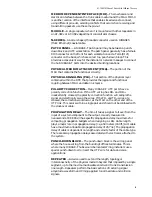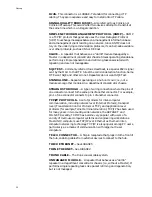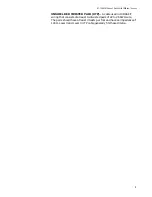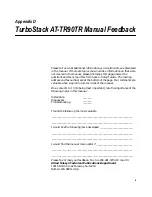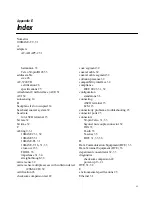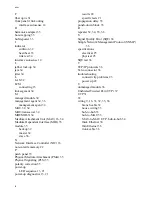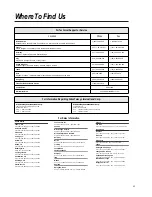
31
Appendix C
Glossary
10BASE2—Also called thinnet Ethernet, thinnet or CheaperNet, a 10
MHz baseband specification. Cable impedance is 50
Ω
and maximum
coaxial segment length is 185 meters (607 ft.).
10BASE5—Also called thick Ethernet, a 10 MHz baseband specification.
Cable impedance is 50
Ω
and maximum coaxial segment is 500 meters
(1,640 ft.). The cable is commonly referred to as yellow cable. Thick
Ethernet cable is typically used as a trunk or backbone path of the
network.
10BASE-FL—IEEE 802.3 Fiber Optic Ethernet. A fiber optic standard
that allows up to 2,000 meters (6,560 ft.) of multimode duplex fiber optic
cable in a point-to-point link.
10BASE-T—IEEE 802.3 UTP Ethernet. Using low cost Level 3 or better
UTP wiring, 100 meters (328 ft.) of point-to-point link segments are
possible. Uses RJ45 connectors and sometimes 50-pin AMP connectors to
a patch panel. Runs at 10 MHz.
100BASE-TX—IEEE 802.3 physical layer specifications for 100Mbps
Ethernet over various wiring specifications. 100BASE-TX is also know as
Fast Ethernet.
50-PIN TELCO (RJ21)—This connector is very common in 10BASE-T
wiring. As opposed to the RJ45 connector, the 50-pin Telco connector
concentrates up to 12 UTP connections onto one connection. This
concentration of UTP ports is then broken out for connection to a punch-
down block inside a building’s wiring closet. 50-pin Telco connections
provide a very clean, uncluttered interface to the building’s wiring.
AT-ADAPT-2— A harmonica-style adapter that allows direct conversion
from a 50-pin Telco connector to RJ45 receptacles.
ATTACHMENT UNIT INTERFACE (AUI)—Connection between a
MAU (transceiver) and a DTE (typically a workstation). Includes a 15-pin
D-sub connector and sometimes a 15-conductor twisted pair cable.
Maximum length is 50 meters (164 ft.).

